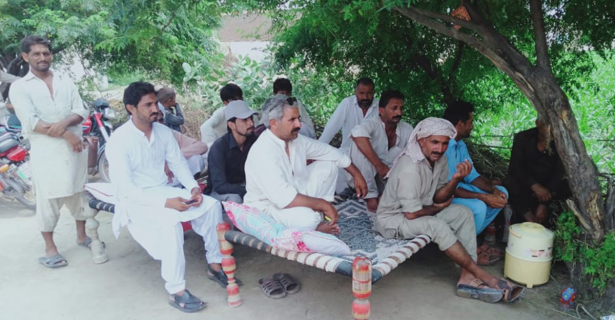While researching in rural Punjab Province, Pakistan, for Kisaan, asset-based finance for small holder famers in Pakistan, Team Kisaan developed the following insights:
1. Increased connectivity due to new roads: The situation of agriculture in Kasur district (the location of research) in Punjab Province is comparatively better than in other parts of Punjab. This is because the city is in close proximity to the provincial capital, Lahore. Connecting roads between villages and towns have been improved over the last few years, which has increased farmers’ access to local markets. Therefore, it has become more feasible for farmers to utilize heavy machinery, such as harvesters, in far off villages.
2. Eagerness to improve agricultural productivity: One of the unanimous findings of the initial surveys was that the farmers were eager to participate in any activity which involves their agricultural/farming concerns. It has been observed that despite a deteriorating supply of agricultural assistance from government institutions, the demand to improve agricultural productivity from small-scale farmers has increased.
3. Problems: Outdated and traditional farming techniques have diminished agricultural productivity. Lack of resources due to limited agricultural income restricts farmers’ ability to invest in their farms. State departments that are responsible for the welfare of small-scale farmers and improving the agriculture sector are mostly dysfunctional and non-existent. Agricultural yield as compared to neighboring countries, such as India, China, and Bangladesh, is very low due to the lack of assistance from state institutions. Microfinance crediting from commercial banks has not helped small-scale farmers due to complex procedures and high interest-rates.
Proposed Solutions
Microfinance crediting based on Islamic finance laws has a huge potential for increasing agricultural productivity and the overall social wellbeing of small-scale farmers. Solar water pumps and tractors were identified to be crucial in decreasing the cultivation costs incurred during a season. Applying the Kisaan model for providing such products on loans will ultimately help modernize the agricultural practices in the locality.
Based on the surveys/interviews, Team Kisaan was able to come up with several recommendations applicable not only in Punjab, Pakistan, but also in the agricultural sector of emerging markets.
Revamping the agriculture sector and its related government bodies should be done by applying the following modern farming techniques:
- Implement a central monitoring system at the provincial level which would periodically assess farmers’ needs and provide suggestions based on real-time data and day-to-day observations. As agricultural income is collected only after the crop has been sold, the repayment schedule must be quarterly or after six months. As observed during field research, the prevailing microfinance banking system is not trusted by small-scale farmers. Simplifying the banking procedures which avoid lengthy documentation is essential to boosting microfinance crediting.
- Establish farmer training centers that focus on imparting modern agricultural education in order to attain modernization in the agriculture sector. With the reach of social media platforms such as Facebook and WhatsApp in the far-off village areas, it has become easier to bridge the gap between farmers and state authorities. Hence, timely information regarding crop diseases and changing weather patterns must be communicated effectively. Being a traditional society, farmers tend to respect religious values regarding the use of loans and interest rates. Islamic banking has more validity among small-scale farmers; therefore, the policies must be designed that encourage the Islamic mode of banking, such as the Kisaan model.

